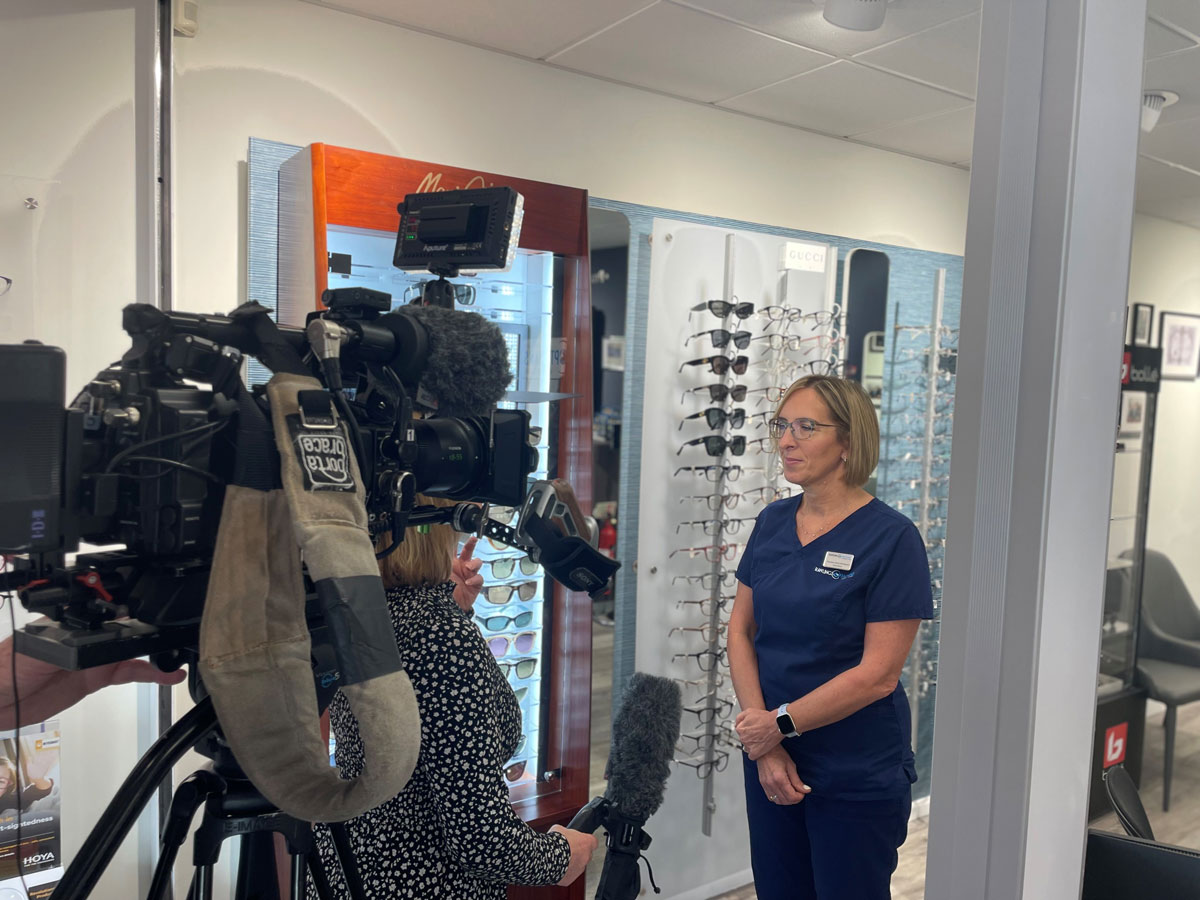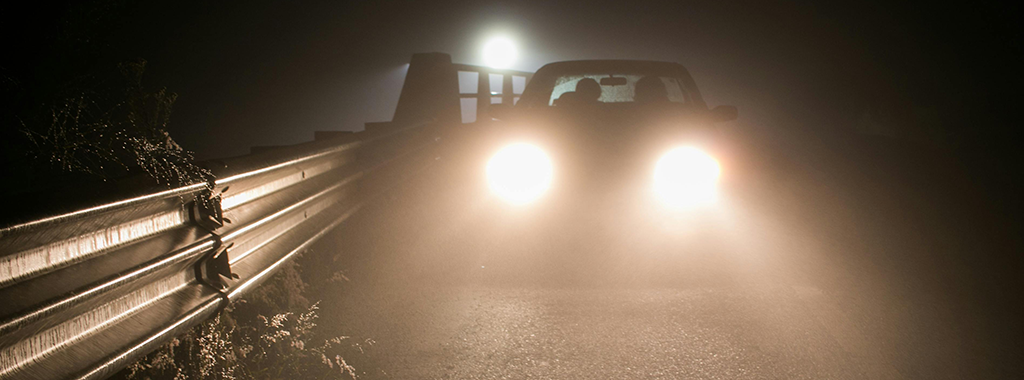It’s that time of year when we all have to get used to driving in twilight or the dark – and let’s face it – it is not everyone’s favourite driving experience! Poor weather and harsh oncoming headlights can cause dazzle and glare – and our Optometrist Rachael Smith from Winchester branch was recently interviewed by the BBC for ‘South Today’ and will be on BBC radio in early November discussing the same topic.
Glare can be both uncomfortable and disabling – affecting your ability to see the road ahead – one question that was asked was “what causes it?”. Rachael explained that during low light levels the retina (which is the light sensitive tissue at the back of the eye) becomes more sensitive to light. So, when exposed to a sudden bright light source, such as a car headlight, this can result in dazzling and uncomfortable glare. Glare occurs as the light is scattered by the tissues inside the eye and is worse at night due to increased pupil size and light sensitivity. In age -related conditions such as cataract, (or even the precursor to this when there are just small opacities), light is scattered even more – so the effects of glare can last longer, so older people are more likely to experience this when driving at night.
Wearing glasses that are scratched or have other surface deterioration can cause glare as can not wearing glasses at all when it has been recommended! In research carried out in late 2023 by the College of Optometrists 24% of people in the UK admitted to not always wearing the recommended glasses for driving. Keeping your own headlights clean – and your windscreen – can also help.
Older people can take up to 4 seconds to recover from dazzling glare whereas in a young person that may be just 1 second, which is quite a difference in distance travelled at 60 mph. This understandably can affect people’s confidence with night driving. However, it isn’t just cataract that can cause glare problems, other issues which affect all age groups such as dry eyes and astigmatism can also cause glare.
One of the issues found nowadays along with the increased traffic (and thus increased oncoming headlights) is the bright LED headlights now used. It is easy to blame these, but it is the proportion of SUV’s and other high vehicles meaning the lights themselves are higher and more in the oncoming traffics eye line which causes problems. Additionally, if the headlights are not adjusted correctly even in a traditionally designed normal height car they can be dazzling. Effectivity of automatic dimming and dipping also needs to be considered. The LED headlights themselves do light up the road ahead better than the old-style bulbs, so they do offer advantages to the driver.
The College of Optometrists and the RAC have successfully campaigned for the Department of Transport to commission research into the factors that are adding to increased reports of glare. This vital research will aim to provide better road safety for all.
Products that can reduce glare can be useful. Simple yellow lenses are to be avoided, as these can cause more problems, however specialist products with anti-glare technology and contrast filters such as Hoya En-Route lenses are optimised for the best night driving experience. From November Rawlings Opticians & Hearing care are offering a promotion with these lenses – contact us for more information.
Rachael summed up her interview with some simple advice: “Have regular eye examinations and always wear your glasses for driving if you have been recommended to do so. Make sure they are kept clean and in good condition – and keep a spare pair in the glove box. If you feel that you are not seeing as well as you could be for night driving, ask you optometrist for advice.”



